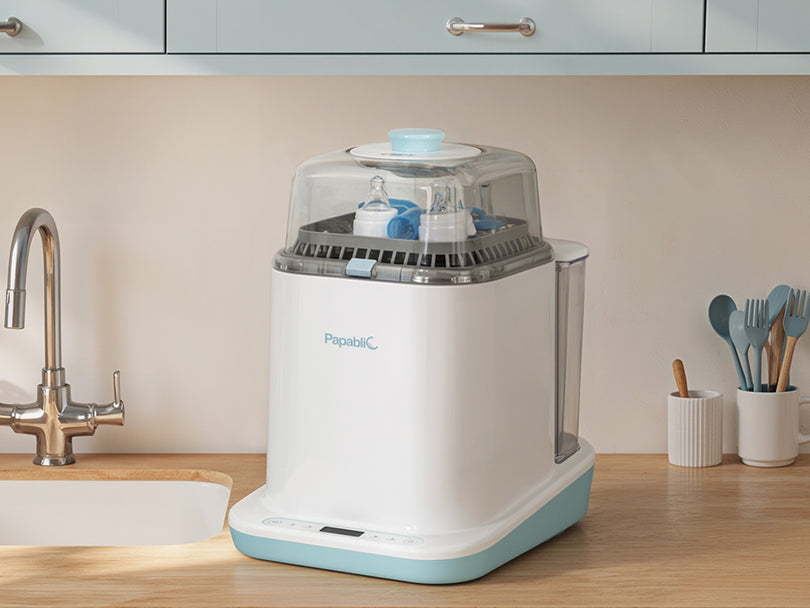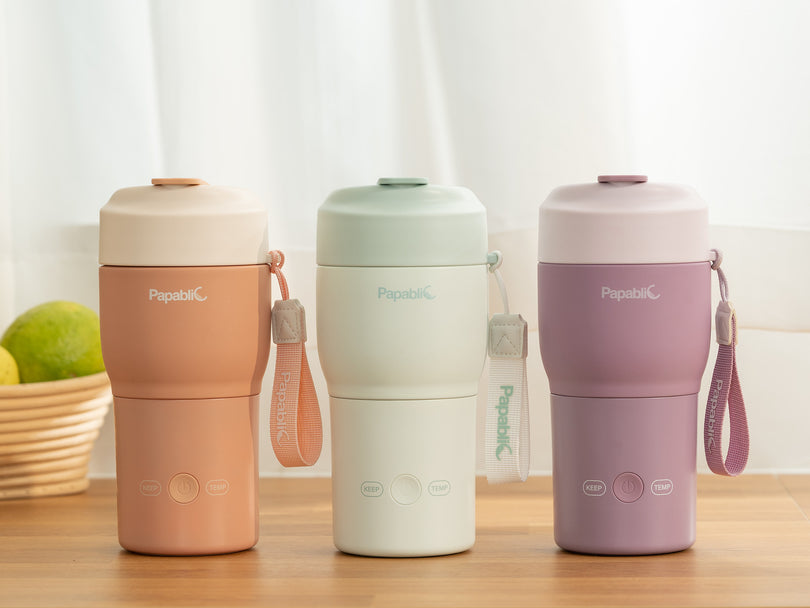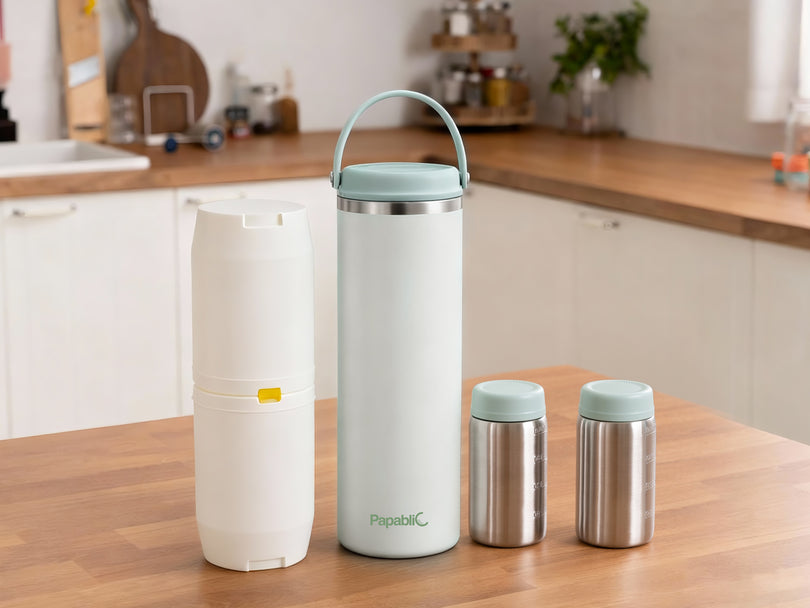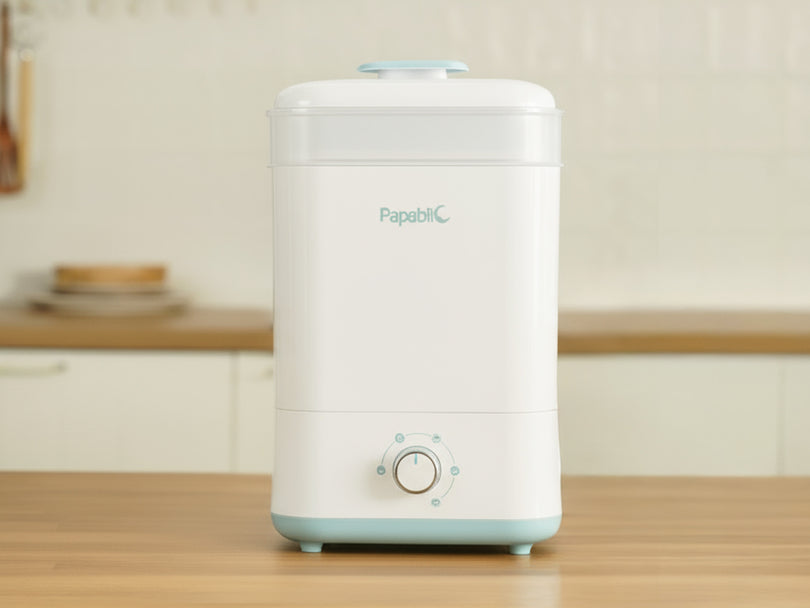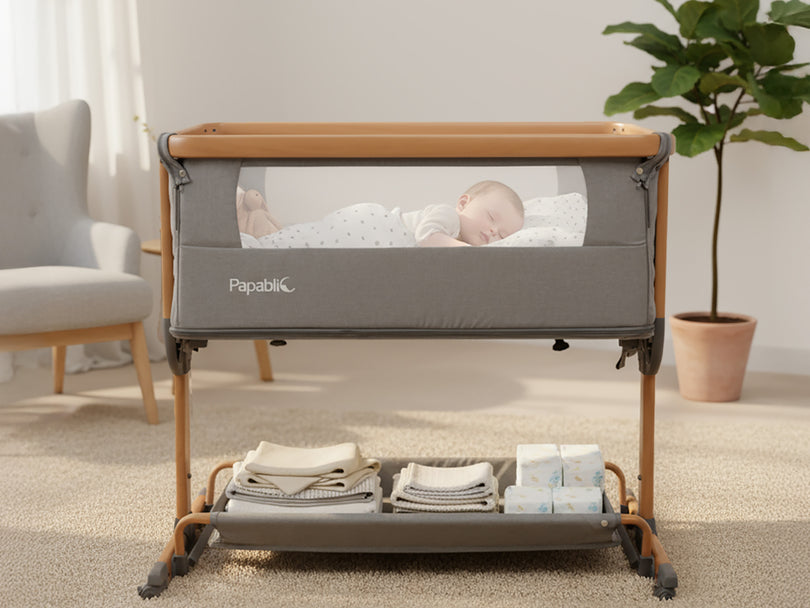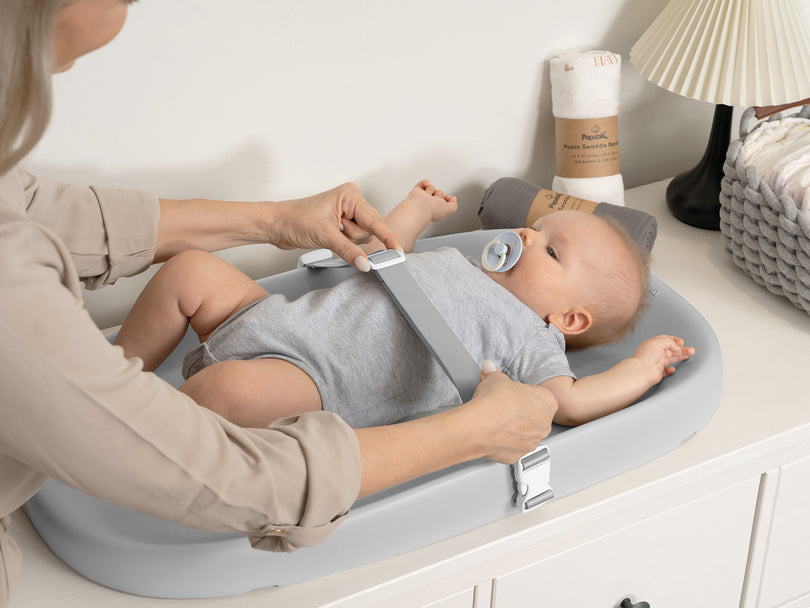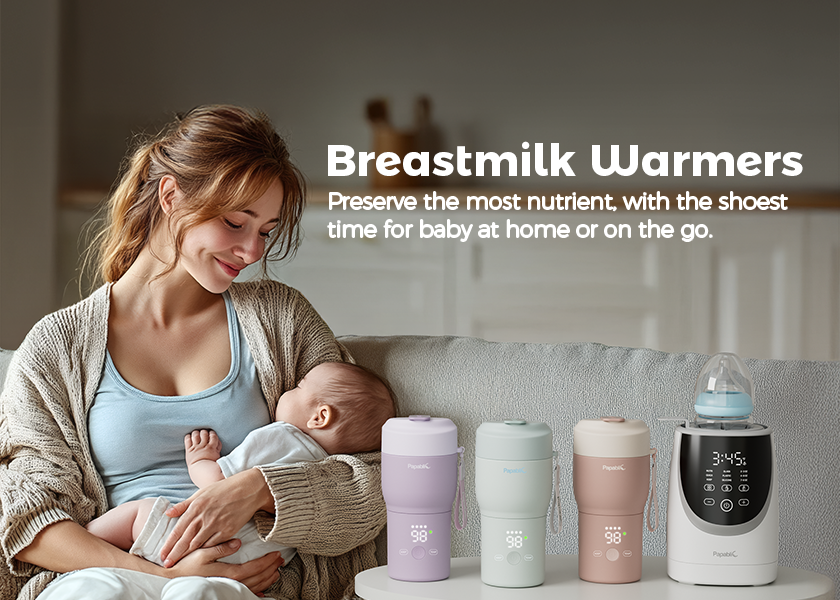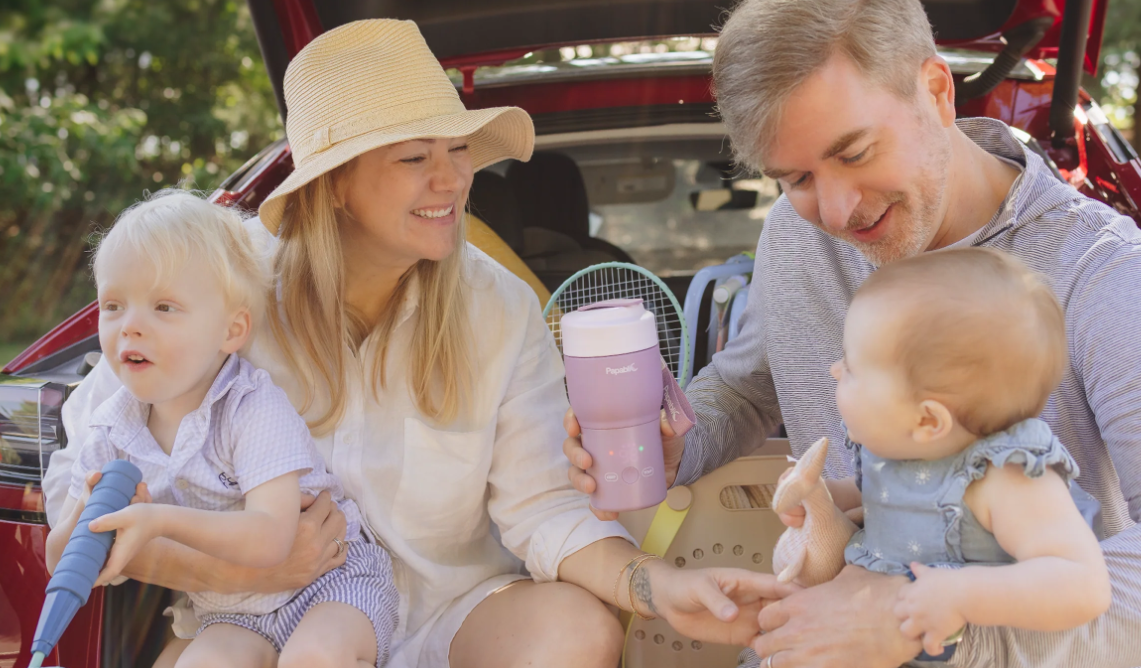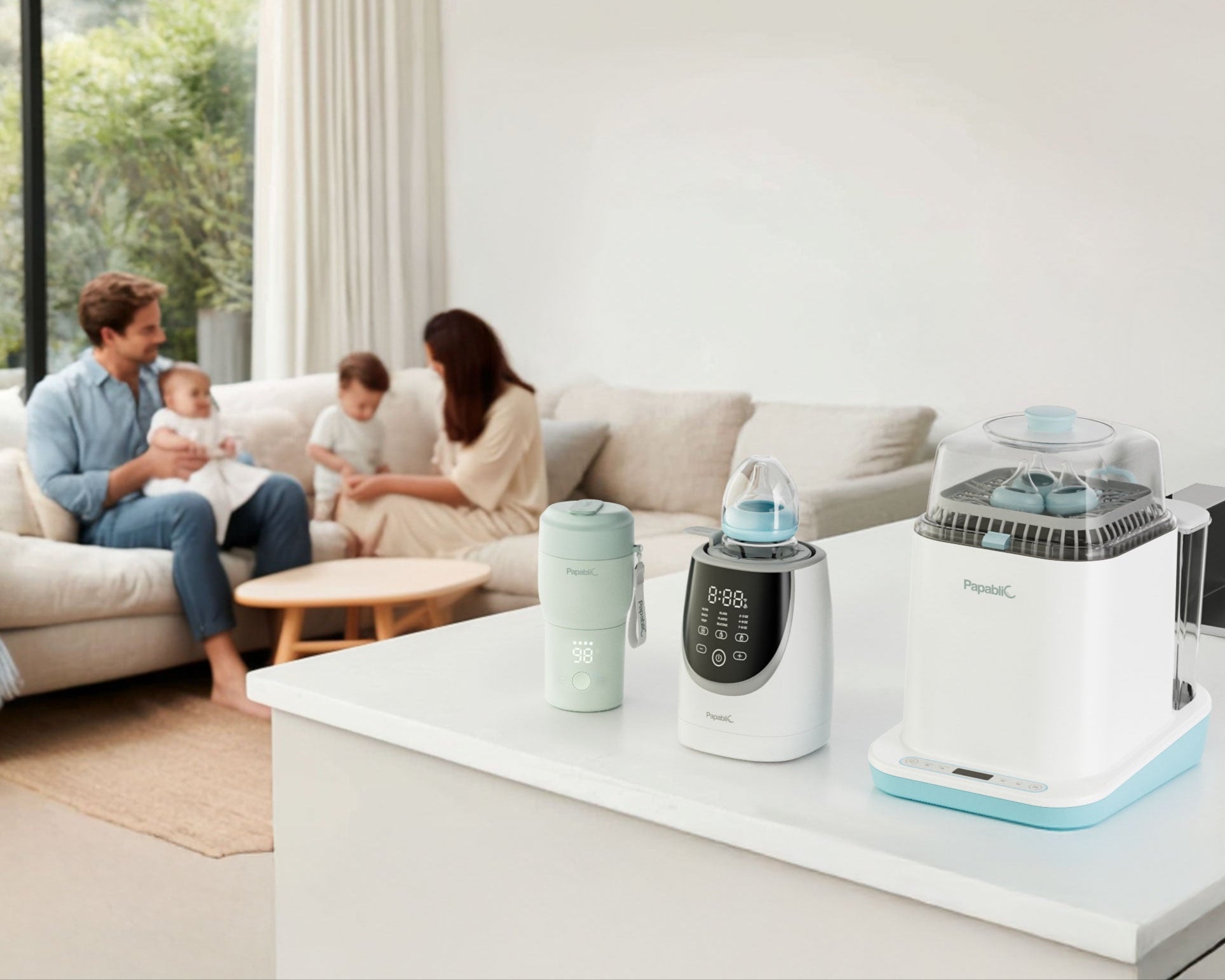Breastfeeding parents often find themselves asking: How long can warmed breast milk sit out? No matter where you are, pumping, getting ready to send your baby to daycare, or merely attempting to make late-night feeds a little less painful, it is important to understand breast milk storage and reheating rules that are essential to the health of your baby. Proper care will guarantee the highest nutritional value in the food and contribute to a minimal threat of bacterial transmission. Understanding these rules is not only important for moms but also for dads, whose participation can help ease the burden on mothers.
This topic will include how long to keep a warmed bottle of breast milk, why reheating is not recommended, how to best warm it, and useful hints to feed your baby with no wastage.
Safe Storage Time for Warmed Breast Milk
When the breast milk has been warmed to room temperature or body temperature, it must not stay out longer than 2 hours. Thereafter, the milk becomes unsafe for your baby because the harmful bacteria may increase rapidly.
In a nutshell:
Unheated milk that has been freshly expressed: Has no more than 4 hours to be left on the counter.
Refrigerated no warming (never warmed) milk: It may be refrigerated for 4 days.
Frozen milk: It will last up to 6 months in a deep freezer.
Warmed breast milk: should not be used for more than 2 hours of use and cannot be reheated.
These timelines will come in handy in preparation for the needed amount of milk and in preventing substantial waste. When dads share in feeding duties, it’s important for them to understand these details as well, so they can better support moms and ensure the baby’s nutrition is safe.
Why You Should Not Reheat or Refrigerate Warmed Breast Milk
The question that most of the parents are concerned about is whether it is possible to reheat or store warm milk to use another time. The brief answer is: no. Breast milk not only provides an ideal bacterial environment when warmed. This process will not be prevented by refrigeration after the grease is cooled.
Equally, warmed breast milk should not be reheated due to the following reasons:
Breast milk has a variety of nutrients and antibodies that can be destroyed when the food is heated multiple times.
Bacteria that were added in round one of warming will still multiply.
Your baby is at a greater risk of getting an illness because of food.
So, warm just enough milk for one feeding to ensure safety and nutrition. As new parents, it’s important to remember this rule to make sure your baby stays safe and receives proper nutrition.

Best Methods to Warm Breast Milk
The thing is that rapid heating and cooling of breast milk should be avoided. In significant properties, important immune-boosting properties can be destroyed by overheating. But the safest ways are the following:
Use a Bottle Warmer
A breast milk bottle warmer sterilizer is ideal and safe to heat your milk evenly, without excessive warming. Among them, one of the best choices is the Papablic NutriWarm Swirlable Bottle Warmer.
As opposed to a conventional warmer, it takes the shape of a swirling action, heating up the bottle surrounding the warm water to avoid hot spots. Warm breast milk in 3mins30s using water-bath heating and formula milk in just 2mins30s.This is a parent-approved baby product.
This versatile baby bottle warmer includes modes for heating breast milk and formula, sterilizing, defrosting, warming food, a vortex-only mode, and auto shut-off. It's also compatible with a wide variety of bottles, making warming easy for new parents.
One-click to start warming with smart memory. Set it once, and the warmer remembers your preferred settings, making feeding even easier. Dads can also easily operate it, helping to share the late-night feeding duties with moms.
Warm Water Bath
The other safe and easy technique is putting the breast milk bottle or storage bag with the milk into a bowl of hot water. Stir till the body temperature. This is one of the best alternatives when you cannot use a bottle warmer.
Avoid Microwaving
Breast milk should never be warmed up using a microwave because:
It may generate dangerous hot spots that burn the mouth of your baby.
Breast milk containing proteins, enzymes, and antibodies may be destroyed during high heating.
Warm Only What You Need
Warm small amounts of breast milk in order to reduce wastage. As an example, say your baby is used to 4-ounce bottles, warm 2, etc., and top it off as required. That way, you will not lose the whole bottle should your baby reject the remaining.
Test Temperature Before Feeding
It is always advisable that you test the milk first before you provide it to your child. Put a little on the inner part of your arm; it mustn't be hot, only warm.

Tips to Avoid Waste and Feed Safely
Pump milk management needs to be thought out. The following are some tips on how to ensure feeding is safe and encourages less wastage: Whether it’s mom or dad, both can participate together, making the breastfeeding process easier and more efficient:
Label and organize: Put milk in labeled containers clearly marked with the date and time. Put the oldest milk at the front.
Storage bag: Since you freeze flat with breast milk in storage bags, you save space, which also lets you thaw precisely what you need.
Monitoring feeding: When your baby finally starts to drink the milk from a bottle as well as the milk from a warm bottle and uses it within two hours.
Smaller servings: Serve the milk in small quantities and increase it accordingly lest one pour off milk to waste.
Use the right tools: A reliable baby bottle warmer, such as the Papablic NutriWarm Swirlable Bottle Warmer, will help make it easier to do in a more time-saving manner.
These practices will help you take the best advantage of the milk that you pump, and ensure your baby remains safe through the process of feeding.
Summary
So, how long does warm breast milk sit out? The response time is not exceeding 2 hours. It must not be refrigerated after warming up, and once warmed, it must not be reheated because such actions heighten the chances of bacterial growth and loss of nutrients.
To warm safely, use gentle methods such as a warm water bath or a bottle warmer. Papablic NutriWarm Swirlable Bottle Warmer is a brand that clearly delivers good results,heating milk evenly without destroying nutrients. For added safety, pairing it with a sterilizer for feeding bottles ensures that all feeding equipment is clean and hygienic.
Lastly, warm what your child requires, label and freeze your milk, and ensure, via testing, that the temperature of the milk is safe before giving it.
Using these suggestions, you will not worry as your baby is being fed with safe and nutritious breast milk.
When moms and dads work together in co-parenting, not only can breast milk be managed more efficiently, but babies also benefit from the love and care of both parents while being fed safely and nutritiously.
Read more:
When to Introduce Bottle to Breastfed Baby: A Complete Guide for Parents
Glass Vs Plastic Baby Bottles: Which Is Better for Your Baby?
Can You Feed a Baby in a Car Seat: Travel Safety Tips and Risks

